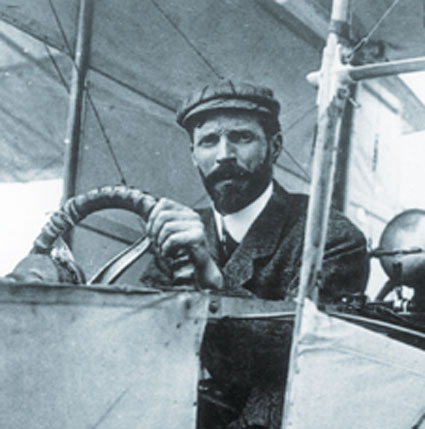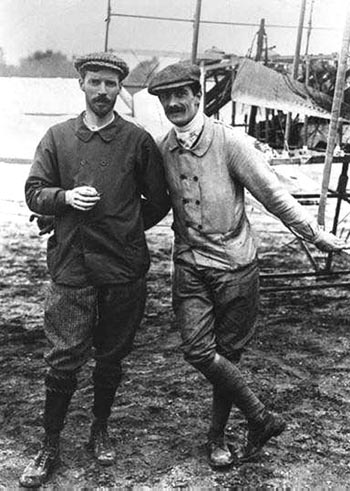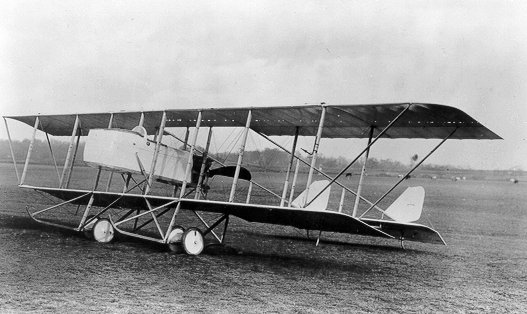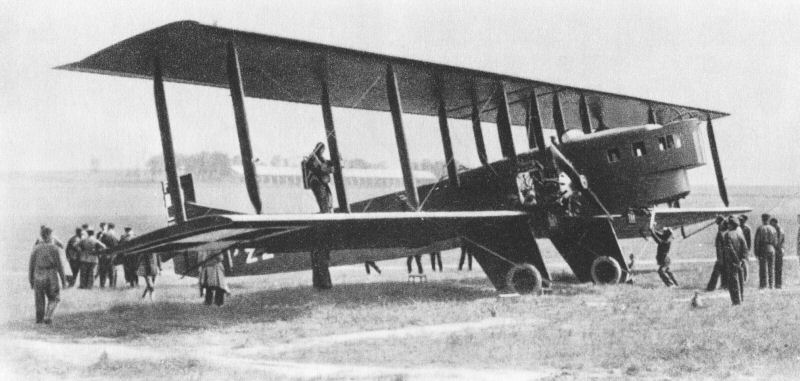<Back to Index>
- Aviator Henri Farman, 1874
- Painter Philippe de Champaigne, 1602
- 1st Prime Minister of the Republic of Vietnam Nguyễn Ngǫc Tho, 1908
PAGE SPONSOR


Henri Farman (born Henry Farman) (26 May 1874 - 18 July 1958) was a French aviator and aircraft designer and manufacturer with his brother Maurice Farman. His family was British and he opted for the French nationality in 1937.
Born in Paris in France, he was the son of a well to do newspaper correspondent working there. Farman trained as a painter at the École des Beaux Arts, but quickly became obsessed with the new mechanical inventions that were rapidly appearing at the end of the 19th century. Because his family had the money, he was able to pursue this interest as an amateur sportsman. In the 1890s he became a championship cyclist, and at the turn of the century he discovered motor racing, competing for Renault in the Gordon Bennett Cup.
When Gabriel Voisin began to produce a powered airplane for sale in 1907, Farman was one of his first customers. He set numerous official records for both distance and duration. These include the first to fly a complete circuit of 1 kilometre (13 January 1908, winning the 50,000 franc Grand Prix d'Aviation offered by Henri Deutsch de la Meurthe) and 2 kilometres (21 March 1908). On the latter date he is also recorded as becoming the first ever airplane passenger, flown by Leon Delagrange. Later in 1908, on 30 October, Farman went on to make the first cross-country flight in Europe, flying from Châlons to Rheims (27 kilometres in 20 minutes).
After designing his own airplane, on 30 May 1908, he took Ernest Archdeacon for a 1241 metre flight at Ghent, Belgium. Although his own flight as a passenger should take precedence there is some evidence that on or around this date he made the first flight with a woman passenger.
In 1909, he opened a flying school at Châlons-sur-Marne at which George Bertram Cockburn was the first pupil. The same year he made further record breaking flights of 180 kilometres in just over 3 hours (at Rheims on 27 August) and 232 kilometres in 4 hours 17 minutes and 53 seconds (at Mourmelon-le-Grand on 3 November). On 28 August, he was the pilot of the first 3-person flight when he carried 2 passengers for 10 kilometres.
In partnership with his two brothers he built a highly successful and innovative aircraft manufacturing plant. Their 1914 model was used extensively for artillery observation and reconnaissance during World War I. The Farman Aircraft company's Goliath was the first long distance passenger airliner, beginning regular Paris-London flights on 8 February 1919.
He was made a chevalier of the Legion of Honor in 1919 and retired in 1937, when the French government nationalized the aircraft industry.
Henri Farman died in Paris and is buried in the Cimetière de Passy in Paris.

